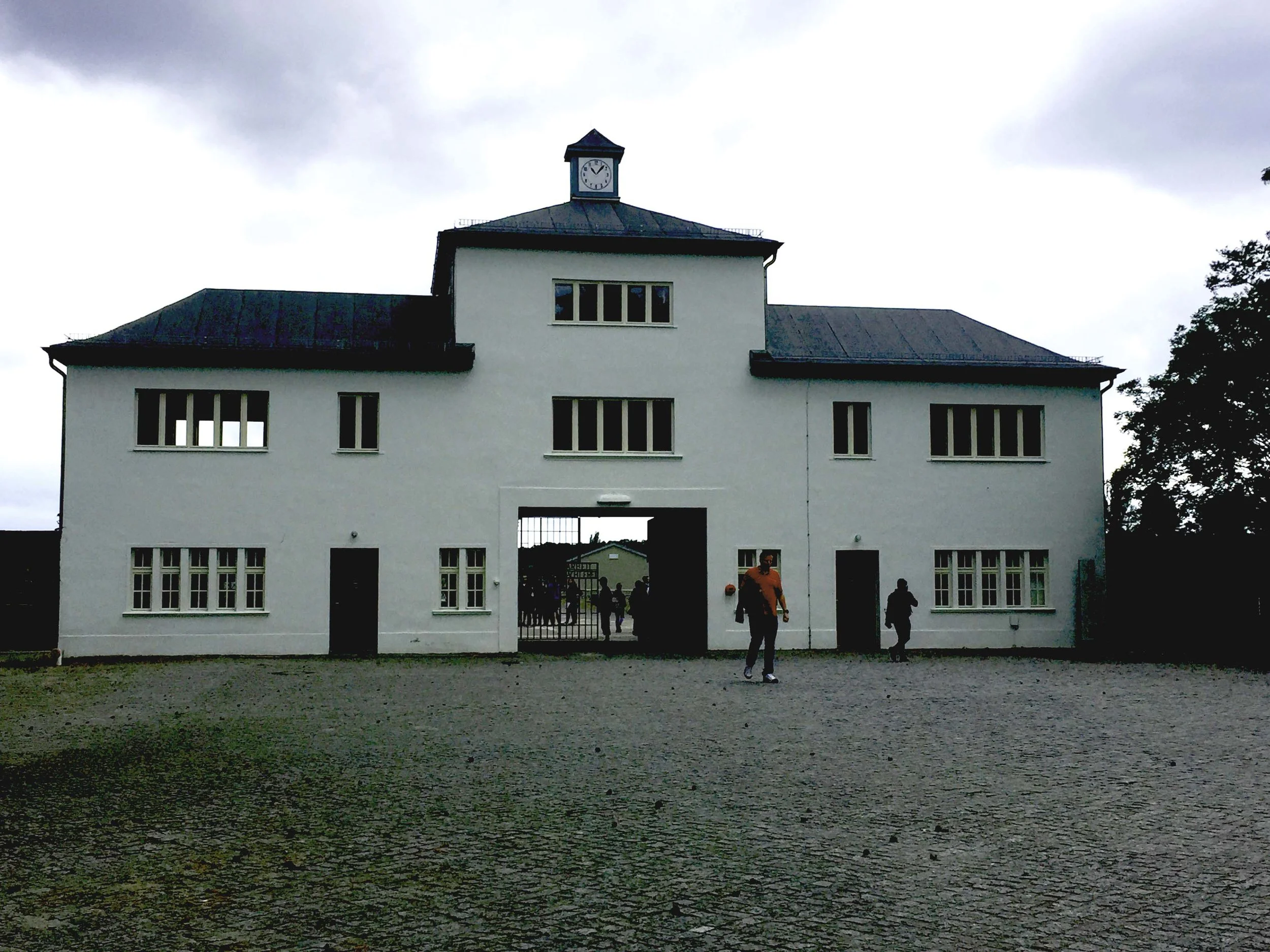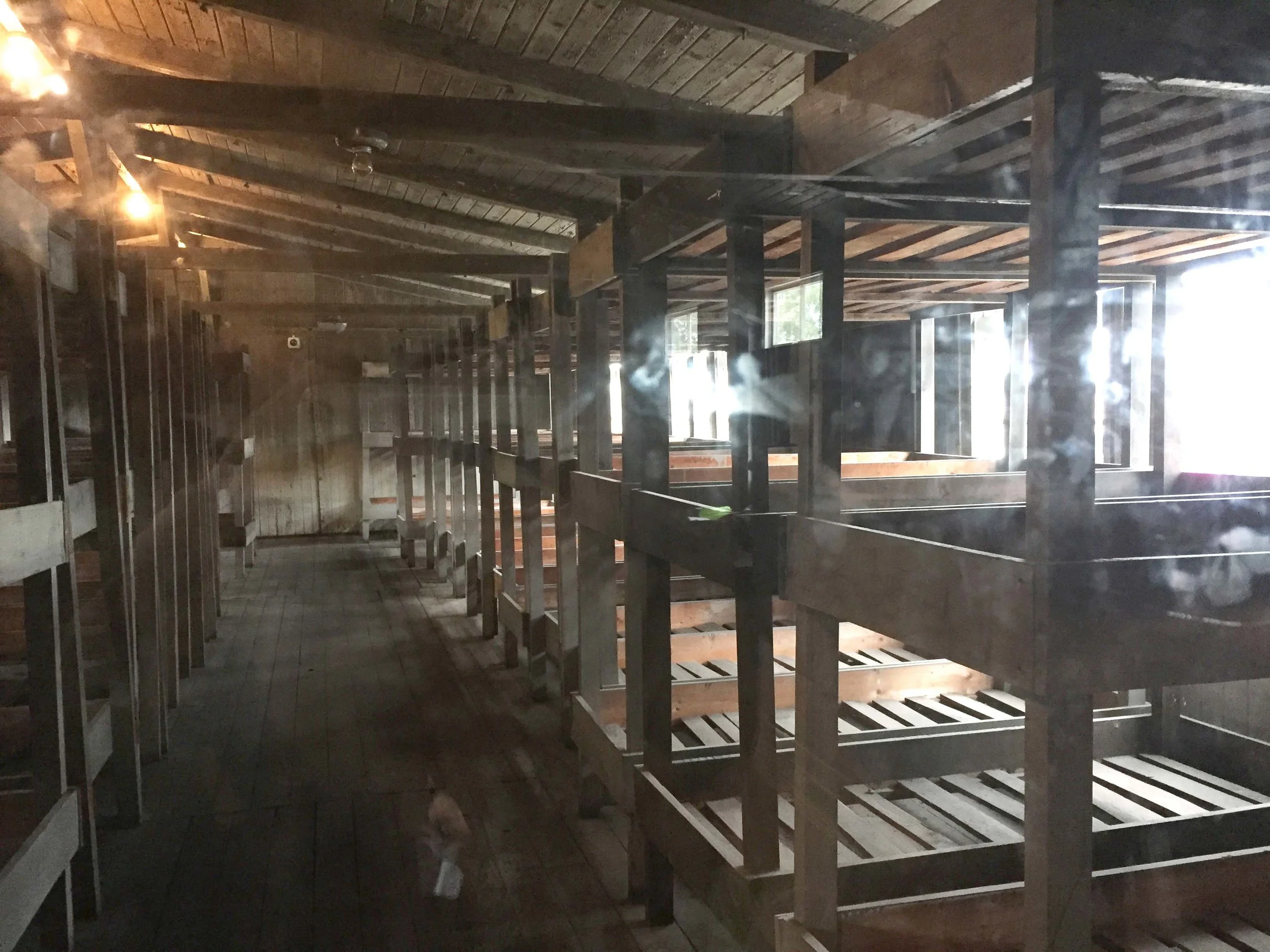Visiting Sachsenhausen Concentration Camp in Berlin, Germany: Part 3
On one of my days in Berlin, I had signed up to visit a concentration camp: Sachsenhausen. While far from a "fun" tour, I felt that, as the Nazi history is so prominent in Germany's history, it would be a very interesting visit. Sachsenhausen was the first concentration camp built, just outside of Berlin, to house political prisoners. It later served as a camp for both Jewish and gay prisoners. As Sachsenhausen is in Germany, it was considered a work camp, rather than a death camp, although many deaths still occurred within the walls. The visit was quite incredible, bringing us as close to what it must have been like in those years despite the fact that we will never quite understand how it felt without having gone through it.
I took very few pictures of the tour considering the nature of it, but have retained numerous points brought up by the guide. One of the most shocking things I remember is that, while the camp was used in the beginning for mostly political prisoners, at the end of the war, it was used by the Soviets for Nazi and Russian prisoners. Considering all the horrible things that had happened there during the war, I assumed it would have been destroyed immediately rather than reused by someone else.
The camp was originally set up in a semi-circle format, so that officers could see all barracks from the main station, above the entrance. Above the entrance there is a sign that translates to "work makes you free". While more towers were built around the perimeter of the camp, Tower A served as the main overseeing point, complete with numerous machine guns.
Due to its proximity to Berlin, and being one of the first camps built, Sachsenhausen also housed the training facility for SS officers and acted as the command center for all concentration camps. Many of the officers trained at this camp and then went on to other camps to oversee them.
At one edge of the camp, there is a long strip of ground with different types of surfaces. One of the many punishments at Sachsenhausen was to make prisoners test military footwear to determine its longevity. Prisoners would be forced to walk over these terrains for the whole day, typically for about 15 to 25 miles per day, or until the shoe was destroyed.
Prisoners, after entering the camp, received uniforms with small identification symbols. Political prisoners were identified by a small red triangle. Jewish prisoners were forced to wear the Star of David and homosexuals pink triangles.
While the camp was considered a work camp, many deaths still occurred there. Many were due to sickness, starvation, and exhaustion, although there were also mass murders, especially towards the end of the war. As was reported by many other camps, the mass murders carried out had a deep psychological effect on guards and was considered too expensive. Different methods were tested prior to the creation of gas chambers. One common method used at Sachsenhausen was to bring prisoners to the infirmary under the pretense they would receive a medical exam. Instead, they were asked to stand against a wall, where on the other side a guard would open a small slot in the wall near the prisoner's head and shoot through the hole, eliminating the prisoner's identity in the guard's eyes.
Sachsenhausen is also well known as a camp where many medical experiments were conducted on unwilling prisoners. One of the buildings we were able to visit inside was the old infirmary. Because so many prisoners died there, officers were afraid to go near it at night. Because of this, there were four prisoners who formed a quartet and would play weekly at night inside the infirmary.
There were a few camps where only women were held, however, most camps housed a minority of women, including Sachsenhausen. One of the building outlines we stopped at, as it is no longer standing today, was an old prostitution house. Used by the officers, women sometimes volunteered for the role as they would receive extra portions of food. Because guards complained about women who were skin and bones, they received extra food portions in order to be "curvy".
Outside of the camp, there are still numerous buildings standing that used to house the officers, training facilities, and entertainment areas. Farther out from the 3-meter walls are rows and rows of houses built by prisoners. Many of these houses were used by higher ranking officers. In order to receive one of these houses, the officer must have proven himself worthy, typically from killing a high number of prisoners. These houses now make up a lovely looking, suburban, neighborhood.
In 1961, the concentration camp officially opened as a national memorial. The memorial used just the front part of the camp, near the entrance tower. The rest of the camp and its barracks was used by German military for training.
Disgustingly enough, the memorial has been vandalized numerous times. Two of the barracks still standing were dedicated to the Jewish prisoners of the camp, often the most punished by guards. In 1992, the two barracks were burned down due to an arson attack. These have been rebuilt but the whole memorial, as well as other memorials throughout Europe, are still vandalized by neo-Nazi graffiti.



